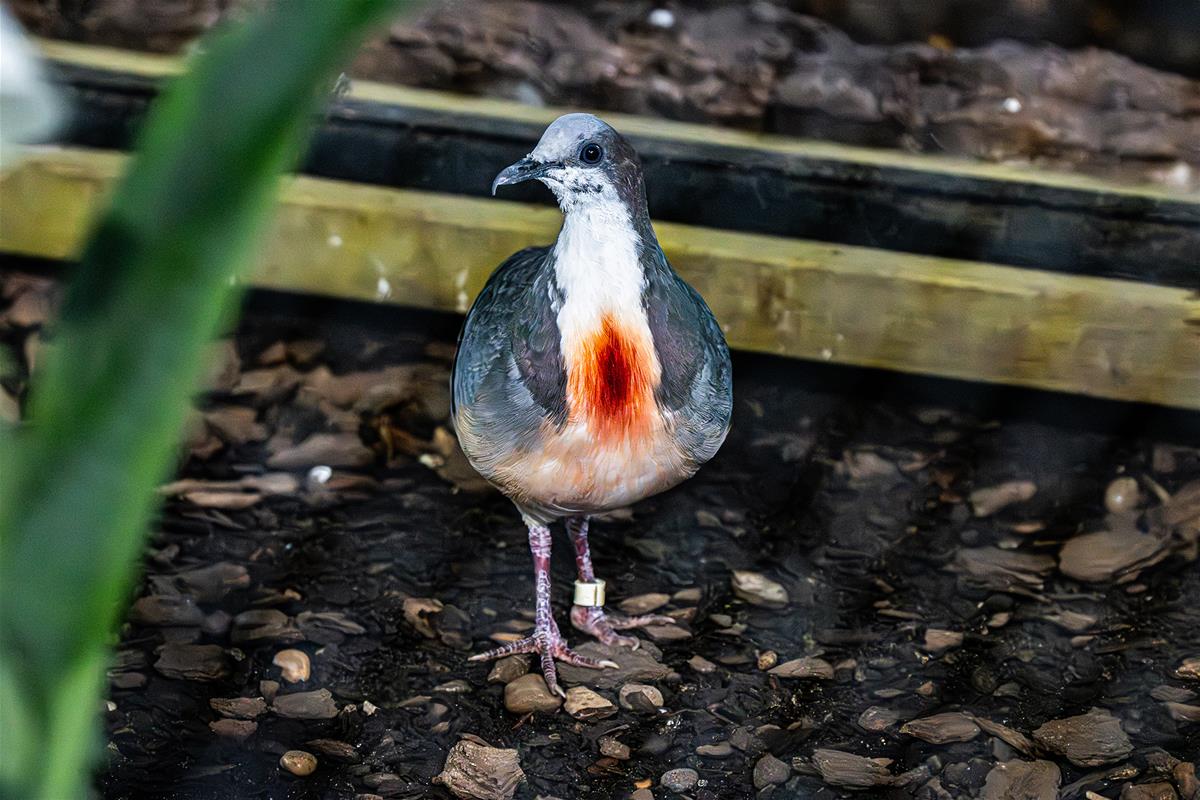Viewable


Location at the Zoo
Indo-Malaya
Global Range
Southeast Asia
Luzon Bleeding-heart Dove
Gallicolumba luzonica
The Luzon Bleeding-heart is a medium-sized ground dove named for the vivid red patch on its chest, which resembles a bloodstain and makes the species instantly recognizable. Adults measure around 25 centimetres in length and weigh roughly 180 to 200 grams. The body is mostly slate-grey and brown with iridescent green and purple tones on the wings and shoulders, and the underparts are pale with a subtle pink wash.
This dove spends most of its time walking quietly along the forest floor, where its muted colours provide effective camouflage among leaves and shadows. It prefers dense understory vegetation and is more often heard than seen in the wild. In zoos, the species often draws visitor attention because of its unusual chest marking and its calm, deliberate movements.
HEAD AND BODY LENGTH
Around 25 centimetres.
WEIGHT
Generally 180 to 200 grams.
Conservation Status: IUCN

Distribution
Occurs primarily on Luzon, the largest island in the Philippines, including the Sierra Madre and Cordillera Central regions. Smaller populations also persist on nearby islands such as Polillo.
Habitat
Favors lowland and foothill forests, generally below 1,000 metres. It is a ground-oriented species, moving through deep leaf litter and thick understory while foraging for food. It is strongly associated with shaded, humid forest floors and does not frequent open or heavily disturbed habitats.
Diet
Feeds mainly on seeds, fallen fruit, soft vegetation, and small invertebrates. Most foraging occurs on the ground, where the bird picks through leaf litter for food items. In captivity, it is typically offered a mix of seeds, pellets, and soft foods supplemented with fruits and insects.
Reproduction
The Luzon Bleeding-heart builds a simple, loose nest of twigs or leaves, usually on low branches or sturdy vegetation near the forest floor. The female typically lays one or two eggs, and both parents share incubation duties. Chicks develop quickly, fledging within several weeks, but remain dependent on the parents for a short period afterward. Breeding success in the wild is strongly linked to habitat quality and availability of undisturbed nesting sites.
Adaptation
Its chest marking may serve a role in communication or mate assessment, though its exact function is not fully understood. Camouflage is central to its survival; the grey and brown plumage blends seamlessly with dappled light and forest litter. The species’ quiet, deliberate movement helps it avoid predators, and its strong, rapid flight provides a quick escape when startled. As a primarily ground-dwelling dove, it has longer legs relative to many arboreal pigeons, aiding in terrestrial agility.
Threats to Survival
Major threats include widespread deforestation, fragmentation of lowland forest, and hunting. Forest clearing for agriculture and development continues across Luzon. The species is also trapped for local use or for the wildlife trade. Loss of intact understory significantly reduces foraging and nesting opportunities. Conservation groups emphasize protecting remnant forests and promoting sustainable land-use practices to preserve remaining populations.












